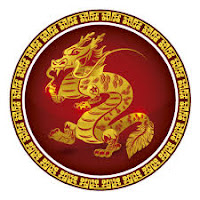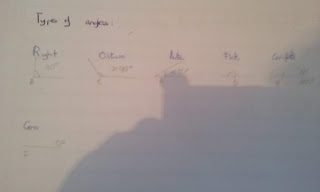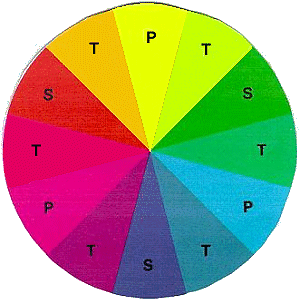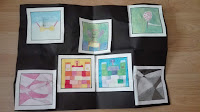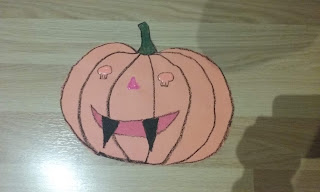JUAN BENITO PORTFOLIO
IESO TOMAS BRETÓN
Wednesday 19 June 2019
Monday 13 May 2019
OLIVER TWIST
CHARLES DICKENS:
He was a famous English novelist and one of the best known of universal
literature, who knew how to masterfully handle the narrative genre, humor, the
tragic feeling of life, irony, with a sharp and critical social criticism as
well as descriptions of people and places, both real and imaginary.He spent his
childhood in London and Kent, places often described in his works. He left his
school and was forced to work from a very young age, when his father was
imprisoned for debts.
Works as: Grandes esperanzas, Cuento de Navidad and
David Copperfield.
SOCIETY:
The society that abounds most is
poverty, because people working in the fields or not even working, do not have
money, an example of poverty because there are enough in the book, Oliver Twist
is immersed in poverty and has to leave her stealing or doing another series of
bad things .Then there is the Industrial Bourgeoisie, it is called that for a reason,
it is because when the Industrial Revolution appears factories and the owners
of those factories are called an example of Burgués Industrial is Mr.Bumble who
owns the hospice where Oliver is born.
SUMMARY:
Oliver Twist is an orphan and they
take him to a workhouse. But they carry to another house. In the house there is
a child who misbehaves with him and Oliver hits him. He walks for seven days
without food and nothing to do. Then he goes to London and meets a child who
welcomes them into his house with more children and Fagin. But the next day
they steal a handkerchief and Oliver get caught because he stood still. And the
man who was robbed takes Oliver to the judge but since Oliver is innocent they
do not do anything to him. Then they take him to the house of Mr. Brownlow, but
the next day he went out to the street and Bill takes him to a house with
Nancy. And the next day Bill and another friend are going to steal Brownlow's
house and Oliver Twist. But when they're in the house Oliver starts screaming
but Bill shoots Oliver and falls to the ground. After a few days Oliver recovers
with Nancy's help. Bill kilt Nancy because she tell information about Oliver to
Brownlon and he calls the police to get Bill. As Bill finds out, he takes
Oliver from a house where all the children and Fagin were. After a long search
of the police, Bill and Oliver pull themselves on a rope and when they get to
the other side Bill turns around because the dog is and stumbles and hangs
himself with the rope. Then Oliver is saved.
MY OPINION:
This movie I loved but also gives great sorrow for Oliver Twist. And this
movie shows that you have to overcome everything.
Wednesday 20 February 2019
ALL ABOUT BRITAIN
VOCABULARY OF THE BOOK:
CHAPTERS 1-2
CHAPTERS 1-2
Quite often: Something that you do many times.
Burned her a stake: Remove, suppress.
CHAPTERS 3-4
Pots: It is a set of things without order.
CHAPTERS 5-6
Gunpowder: Is used for firecrackers or fireworks.
Cellars: It is a place where it sell wine.
CHAPTERS 7-8
Dried blood: It is a red liquid.
CHAPTERS 9-10
Typed: It is like a model.
CHAPTERS 11-12
Hoaxes: Make someone believe something.
CHAPTERS 3-4
Pots: It is a set of things without order.
CHAPTERS 5-6
Gunpowder: Is used for firecrackers or fireworks.
Cellars: It is a place where it sell wine.
CHAPTERS 7-8
Dried blood: It is a red liquid.
Innings: It is a part of a place you enter or leave.
CHAPTERS 9-10
Typed: It is like a model.
CHAPTERS 11-12
Hoaxes: Make someone believe something.
Saturday 17 November 2018
PHYSICAL EDUCATION WORK
Mireia Belmonte is a swimmer from Barcelona has participated in three Olympic Games. She debuted in the Olympic competition with 17 years, in Beijing 2008. His second participation was in London 2012, in which she premied his Olympic medals with two silver medals in 200 m and 800 m free, reducing the Spanish record by four seconds. In the most recent of Rio 2016, she was proclaimed Olympic champion of 200 m butterfly, test in which she has proclaimed in turn, world and European champion, and achieved the bronze medal in 400 m styles.MIREIA BELMONTE:
DRAGON'S HEAD:
It is a very typical Chinese game. The dragon is a mythological and legendary animal of China and other Asian cultures that has parts of nine animals: lobster eyes, deer horns, camel's nose, dog's nose, catfish's whiskers, lion, snake tail, fish scales and eagle claws.We make a group of eight to twelve players forming a line. The first represents the dragon's head and the last its tail. The group starts to walk slowly, grabbing the shoulders of the partner in front but, be careful! when one of the players shouts: ya !, the head of the dragon has to try to catch the tail. The other players, without letting go, will try to protect the queue because, if it is played, it is eliminated from the game. In the event that the players are released and the dragon figure is broken, the first player will have to go to the dragon's tail and thus the second player in the row will become the first player.
Age: from 6 to 12 years old.
Duration: 10 minutes.
Organization: in a row.
Material: without material.
Sunday 4 November 2018
VOCABULARY OF ART
GEOMETRY:
Geometry: It's an area of knowdedge wich studies any elements and operations.
Point: In geometry a point can be defined as the place or location where two lines intersect. A point has not dimensions, no height and no width.
Line: A one dimensional object formed of infinite points.It has not end points and continues on forever in a plane.
Ray: A line wich beggins at a particular point and extends and lessly in one direction.
Freehand: Draw by hand without guiding instruments and measurements.
Line/Technical drawing: It is a drawing made whit the help of suppliers.
Midpoint: It is the point that is halfway between the endpoint of the line segment.
End point: And end point is a point at which a line segment or a ray ends or starts.
Line segment: It is a line with two endpoints.
Length: Measurement of something from end to end.
Compass: It is a tool for drawing circles and arcs and also for measuring between points.
Protractor: Is an instrument for measuring or drawing angles on paper.
Set squares (UK) triangles (US): There are two special rulers.One is called the 45 triangle and other 60/30 triangle.
Eraser: Use for eliminate the mistake.
Ruler: For making lines.
Line segment copying: Given the segment AB, copy it with the same length with a compass.
Circles: Set of points at the same distance to a point called center.
Radius: It is a length of a line segment from the center to its perimeter (radiuses-plural).
Diameter: A line segment that passes through the center and conects two points of a circle.Its length is double than the radius.
Circunference: It is the full length of a circle.
Chord: A line segment which conects two points of the circle not though the centre.
Arc: Segment of a circle.
Centre: It is a point equidistant to any points on a circle.
Arrow: It is a line segment enter chord and arc pass to the centre.
IMPORTANT DEFINITIONS ABOUT ANGLES AND LINES:
Parallels: They are two lines which never intersect themselves.So all their points are equidistant.
Perpendicular: They are lines which meet forming four right angles-90.
Oblique: They are lines which are not parallels neither perpendicular.
Angles: It is a figure formed by two rays sharing a common enpoint.
TYPES OF ANGLES:
Complementary angles: They are couples of angles which sum is 90.
Suplementary angles: They are couples of angles which sum is 180.
POLYGONS:
Star polygon: It is a particular polygon case with a star and is consecutive vertices of a regular polygon.
Inscribed polygon: They are polygons place inside circles so all the vertex of the polygon.
Convex polygon: Any line draw through the polygon meets its boundary exactly twice.
Non convex (concave): A line may be found which meets its boundary more than twice.
Triangles: It is a flat figure with three sides and three angles.
Quadrilaterals: They are polygons with four sides and four angles.
Parallelograms: They are quadrilaterals with two sides of parallels opposite equal sides and two pairs opposite equal angles.
IMPORTANT DEFINITIONS RELATED TO SYMETRY:
Symmetry: It is a quality of some shapes which some of their parts are reflections of others.
Reflection symmetry: It is a shape quality which is formed by two halves facing each other with an axis or fold line in between as if bath side were mirror images of each other.
Symmetry Axis: It is a line which divedess a shape into two symmetry halves. Every elements are the same distance from the axis.
Vocabulary:
Dot: It is a smallest and most simple element in art expression.
Three-dimensional capacity: When the size,shapes and colors and changed.
Expensive capacity: The point has a unlimited capacity to represent images and to express ideas and emotions.
Optical mix: When colorsb are mixed with the help of distance point aren't mixed on the palette or on the points.
DOT GEOMETRY:
Dot: It is a smallest and most simple element in art expression.
Three-dimensional capacity: When the size, shapes and colors are changed and create a visual sensations.
Exprensive capacity: The point has a unlimited capacity and create a unusual efect.
Optical mix: When colors are mixed with the help distance , it is used by pointillist.
LINES:
Way line: They are formed by several fragments of curved lines.
Curly line: They hold more curves than way lines and show loops.
Scribble: It is a line that are traced randomly usually in first stages.
Hatching: It's a way of shading or giving tomes to the areas of objects.
Cross hatching: It's a way of shading areas of a drawing.
Dashed lines: They are lines which are not continius.
Blured: They are very soft so they are hard .
Composite lines: They are lines composed by fragments.
Vertical lines expressiveness: The express an ascendent or descendent movement.
Horizontal lines expresiveness: They produced of stability and calmess or tranquility.
Skew lines expresiveness: They produced movement feelings.
DEFINITIONS ABOUT THE PLANE OR FLAT SHAPE:
Plane: It could be a spot or a brushtroke. It is a two-dimensional surface, height and width but not depth.
The plane three dimensional capacity: It is consists on creating volume when several flat shapes get together.
Flat organic shapes: They follow natural principles and can take countles appareances.
Flat geometric shapes: They follow mathematical principles. In unusual arts there are: circle, square and triangle.
DEFINITIONS ABOUT TEXTURE:
Texture: It is the unusual and tactile quality of the surface due to the material.
Tactile textures: Are those that can be percived through the sers of touch.
Natural texture: Those that can be found in nature.
Artificial texture: Are those created by the human being macanically.
Rubbing tecnlogye: It consists on fructionary or publing a crayon or colored.
Scratchboarding: It is usually done with maxed colors. When scratching over the first .
IMPORTANT DEFINITIONS ABOUT COLOR:
Color: It is a basic element of visual language. It is a light impression that arrives to the eyes.
Primary: red, green and blue V.
Secondary: yellow, cian and magent.
Pigments: It is a powder that you use to do or make all the things that have color.
Primary: magent, cian and yellow.
Secondary: blue V, red and green.
THE THREE PROPERTIES OF COLOR:
Hue: Also called Tone or tint, it is the name of the color defined by its wavelength.
Saturation: Degree of purity of a color. If a color is very saturated it means that it is very pure and doesn't have many colors in its mix.
Value: Sometimes called brightness or luminosity. It is the amount of black or white that a color has in its mix.
Complementary colors: They are pairs of colors which are located one in front of each other on the color wheel. Is formed by the mix of other two primary in equal parts.
Warm range: It's a scale of colors that has either more yellow, more magent, or both in this mixture. They express warmth, energy, youthness or proximity.
Reflection symmetry: It is a shape quality which is formed by two halves facing each other with an axis or fold line in between as if bath side were mirror images of each other.
Symmetry Axis: It is a line which divedess a shape into two symmetry halves. Every elements are the same distance from the axis.
Vocabulary:
Dot: It is a smallest and most simple element in art expression.
Three-dimensional capacity: When the size,shapes and colors and changed.
Expensive capacity: The point has a unlimited capacity to represent images and to express ideas and emotions.
Optical mix: When colorsb are mixed with the help of distance point aren't mixed on the palette or on the points.
DOT GEOMETRY:
Dot: It is a smallest and most simple element in art expression.
Three-dimensional capacity: When the size, shapes and colors are changed and create a visual sensations.
Exprensive capacity: The point has a unlimited capacity and create a unusual efect.
Optical mix: When colors are mixed with the help distance , it is used by pointillist.
LINES:
Way line: They are formed by several fragments of curved lines.
Curly line: They hold more curves than way lines and show loops.
Scribble: It is a line that are traced randomly usually in first stages.
Hatching: It's a way of shading or giving tomes to the areas of objects.
Cross hatching: It's a way of shading areas of a drawing.
Dashed lines: They are lines which are not continius.
Blured: They are very soft so they are hard .
Composite lines: They are lines composed by fragments.
Vertical lines expressiveness: The express an ascendent or descendent movement.
Horizontal lines expresiveness: They produced of stability and calmess or tranquility.
Skew lines expresiveness: They produced movement feelings.
DEFINITIONS ABOUT THE PLANE OR FLAT SHAPE:
Plane: It could be a spot or a brushtroke. It is a two-dimensional surface, height and width but not depth.
The plane three dimensional capacity: It is consists on creating volume when several flat shapes get together.
Flat organic shapes: They follow natural principles and can take countles appareances.
Flat geometric shapes: They follow mathematical principles. In unusual arts there are: circle, square and triangle.
DEFINITIONS ABOUT TEXTURE:
Texture: It is the unusual and tactile quality of the surface due to the material.
Tactile textures: Are those that can be percived through the sers of touch.
Natural texture: Those that can be found in nature.
Artificial texture: Are those created by the human being macanically.
Rubbing tecnlogye: It consists on fructionary or publing a crayon or colored.
Scratchboarding: It is usually done with maxed colors. When scratching over the first .
IMPORTANT DEFINITIONS ABOUT COLOR:
Color: It is a basic element of visual language. It is a light impression that arrives to the eyes.
Primary: red, green and blue V.
Secondary: yellow, cian and magent.
Primary: magent, cian and yellow.
Secondary: blue V, red and green.
THE THREE PROPERTIES OF COLOR:
Hue: Also called Tone or tint, it is the name of the color defined by its wavelength.
Saturation: Degree of purity of a color. If a color is very saturated it means that it is very pure and doesn't have many colors in its mix.
Value: Sometimes called brightness or luminosity. It is the amount of black or white that a color has in its mix.
Complementary colors: They are pairs of colors which are located one in front of each other on the color wheel. Is formed by the mix of other two primary in equal parts.
Warm range: It's a scale of colors that has either more yellow, more magent, or both in this mixture. They express warmth, energy, youthness or proximity.
Tuesday 30 October 2018
HALLOWEEN
PUMPKIN:
TO MAKE THIS PUMP FIRST I HAD TO SCRAP IT ON A PAPER THEN I HAD TO DO A SKETCHES. AND AFTER MAKING ALL THE SKETCHES I CHOSE A SKETCH AND I DID IT IN THE PUMPKIN I HAD TO CUT. SUDDENLY MADE THE SKETCH IN THE PUMPKIN IS COLORED.
SKULL:
TO MAKE THIS PUMP FIRST I HAD TO SCRAP IT ON A PAPER THEN I HAD TO DO A SKETCHES. AND AFTER MAKING ALL THE SKETCHES I CHOSE A SKETCH AND I DID IT IN THE PUMPKIN I HAD TO CUT. ONCE MADE THE SKETCH IN THE PUMPKIN IS COLORED.
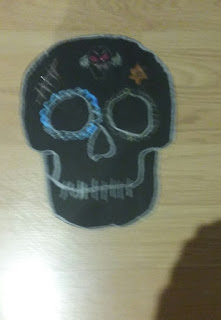
Wednesday 10 October 2018
UNITS
UNITS 0-1:
GLOSSARY:
Cat: Cats are carnivorous mammals with four legs and they are domestic.
Dog: The dog is an animal carnivorous whith four legs and domestic mammalian.
Fish: Is an aquatic vertebrate animal that breathes through gills.
Pet: It is a domestic animal that serves company.
Rabbit: It is a mammal with four legs and furry.
Fireplace: Site in a house to light a fire.
GRAMMAR:
Verb to be: I understood it very well.
Present simple-be: I understood it very well.
LISTENING:
Homes with a difference:I understood it very well.
Pets in the UK :I don't understood it very well.
READING:
Life on the road: I understood it very well.
Pet's corner: I don't understood it very well.
WRITING:
My school day: I understood it very well.
Our class: I understood it very well.
SPEAKING:
Talking about your school timetable: I understood it very well.
Classroom language: I understood it very well .
Asking for and giving personal information: I understood it very well.
MY DIARY OF ACHIEVEMENT:
I have achieved almost all lessons.
AREAS I NEED TO WORK ON:
I need to work the translation.
WHAT I LEARN ABOUT CULTURE:
I learn about UK.
MY OPINION:
My first blog I have been very good.
UNIT 2:
GLOSSARY:
Autumn: Season of the year that is between summer and winter.
Blossoms: Are beings that produce us oxygen.
Boat: Recipient to keep things.
Costumes: Clothing or thing that makes you change the aspect.
Fireworks: Are petards that are launched to the air that produce a very strong noise.
Harvest: Set of fruits that are collected from the earth.
Spring: Season of the year that is between winter and summer.
Summer: Season of the year that is between spring and autumn .
Winter: Season of the year that is between autumn and spring.
GRAMMAR:
Present simple-afirmative and negative: I understood it very well.
Object pronouns: I understood it well.
Present simple-questions and short answers: I understood it very well.
Wh-questions: I understood it well.
LISTENING:
What activities do you do in your free time: I understood it well.
Wordsn beginning with/h/: I understood it very well.
READING:
Working with elephants: I understood it very well.
A festival for every season: I understood well.
WRITING:
Writing a personal profile: I understood it very well.
Capital letters: I understood it very well.
SPEAKING:
Talking about free time activities: I understood well.
Arranging to meet: I understood well.
Verbs- play, do, and go: I understood well.
MY DIARY OF ACHIEVEMENT:
I have achieved almost all lessons.
AREAS I NEED TO WORK ON:
I need to work the listening.
WHAT I LEARN ABOUT CULTURE?:
I learn about around the world.
MY OPINION:
I think this unit is very interesting.
UNIT 3:
VOCABULARY:
Bell: A bell is a simple device that emits a sound.
Break: A situation to catch energy.
Dream: Imagine things or events.
Luck: It is a cause that makes you do things right.
Registration: Is to sing up for something.
Can't stand: Is not to hold something.
Hate: It is something you do not like.
Love: It is something you do like.
Be crazy about: It is something you hate.
(not) like: It is something you don't like.
Not mind: It is something you ignore.
Meet: Is when you have a relation.
Ride: Is to get on something.
Spend: Is when you use the money in something.
Stay: Be in some place.
Wear: Is when you put something.
GRAMMAR:
Adverbs of frequency: I understood it very well.
Like + -ing/noun: I understood it well.
LISTENING:
I'm crazy about sport: I understood it very well.
Words with-ing: I understood it well.
READING:
Glasgow school of sport: I understood it well.
School: a world of differences: I understood it very well.
WRITING:
Writing a video script: I understood it well.
This, That, These,Those: I understood it very well.
SPEAKING:
Making suggestions and giving opinions: I understood it well.
About me: I understood it very well.
I have achieved almost lessons.
AREAS I NEED TO WORK ON:
I need to work the speakig.
WHAT I LEARN ABOUT CULTURE ?:
I learn about the schols in the USA and the UK.
MY OPINION:
I think this unit is very interesting.
UNIT 4:
Crowded: Some people.
Queue: It is when there are some people to take a thing.
Icy: It is very cold or it has been very cold.
Sunny: It is a day with a lot of sun.
Thunderstorm: Tempest witn short duration.
Warm: Something with a lot of heat.
Wet: Something with a lot of water.
Windy: It is a air stream.
Cloud: Air mass.
Fog: Darkness around something.
Heat: It is when the temperature it is very high.
Bring: Move something.
Trip: Go to another side.
UNIT 4:
Crowded: Some people.
Queue: It is when there are some people to take a thing.
Icy: It is very cold or it has been very cold.
Sunny: It is a day with a lot of sun.
Thunderstorm: Tempest witn short duration.
Warm: Something with a lot of heat.
Wet: Something with a lot of water.
Windy: It is a air stream.
Cloud: Air mass.
Fog: Darkness around something.
Heat: It is when the temperature it is very high.
Bring: Move something.
Trip: Go to another side.
GRAMMAR:
Comparative adjectives: I understood it well.
Superlative adjectives: I understood it very well.
LISTENING:
The coldest place in the world: I understood it well.
Woodside park: I understood it very well.
READING:
Portaventura - Fun for all: I underdstood it well.
Niagara Falls: I understood it very well.
Confusing words: I understood it well.
WRITING:
Writing about three different places: I understood it very well.
So and because: I understood it well.
SPEAKING:
Asking for travel information: I understood it well.
Sounds: I understood it very well.
About me: I understood it very well.
MY DIARY OF ACHIEVEMENT:
I have achieved almost lessons.
AREAS I NEED TO WORK:
I need to work the writing.
WHAT I LEARN ABOUT CULTURE:
I learn about Auckland and New Zealand.
MY OPINION:
I think this unit is very funny.
UNIT 5:
GLOSSARY:
Ballon: It is an object that swells to play or decorate.
Blog: It is a web page.
Huge: Something that is very big.
Model: It is a thing that serves as a guide.
Tiny: Something very small.
GRAMMAR:
Present simple: I understood it well.
LISTENING:
Solo adventure: I understood it well.
Oliver Twist: I understood it very well.
Having a phone conversation: I understood it very well.
READING:
A talented young photographer: I understood it well.
Bringing classical music to young people: I understood it well.
A route to the top: I understood it well.
WRITING:
Writing about a photo: I understood it well.
Giving examples: I understood it well.
Going to school: I understood it very well.
SPEAKING:
Having a phone conversation: I understood it well.
False friends: I understood it well.
Silent letters: I understood it very well.
Oliver Twist: I understood it very well.
MY DIARY OF ACHIEVEMENT:
I have achieved almost all lessons.
AREAS I NEED TO WORK:
I need to work the listening.
WHAT I LEARN ABOUT CULTURE:
MY OPINION:
This unit is very interesting.
UNIT 6:
GRAMMAR:
Can, can 't, must and musn't for permission, obligation and prohibition: I understood it well.
Countable and uncountable nouns some, any, much, many, a lot of: I understood well.
UNIT 7:
GLOSSARY:
Sweatshirt: Sportswear made of cotton or other fabric.
Slim: That has little fat or little meat.
Ginger: That has red hair.
Freckles: Small spot, rounded and brown.
GRAMMAR:
Past simple-be: I understood it very well.
Was, were, there was and there were: I understood it well.
Past simple-regular verbs: I understood it very well.
LISTENING:
A bank robbery: I understood it well.
Practical English: I understood it well.
READING:
Six centuries: I understood it well.
An interview with an astronaut: I understood it very well.
Say it!: I understood it well.
WRITING:
Writing about memories: I understood it well.
Adjective order: I understood it well.
When they were young: I understood it very well.
SPEAKING:
Shopping for clothes: I understood it very well.
Say it: I understood it well.
MY DIARY OF ACHIEVEMENT:
I have achieved almost all lessons.
AREAS I NEED TO WORK:
I need to work the listening and translation.
WHAT I LEARN ABOUT CULTURE:
MY OPINION:
I think this unit is very funny.
UNIT 8:
GRAMMAR:
Past simple - irregular and regular verbs: I understood it very well.
Past simple-questions: I understood it very well.
UNIT 5:
GLOSSARY:
Ballon: It is an object that swells to play or decorate.
Blog: It is a web page.
Huge: Something that is very big.
Model: It is a thing that serves as a guide.
Tiny: Something very small.
GRAMMAR:
Present continuos: I understood it very well.
Present simple: I understood it well.
LISTENING:
Solo adventure: I understood it well.
Oliver Twist: I understood it very well.
Having a phone conversation: I understood it very well.
READING:
A talented young photographer: I understood it well.
Bringing classical music to young people: I understood it well.
A route to the top: I understood it well.
WRITING:
Writing about a photo: I understood it well.
Giving examples: I understood it well.
Going to school: I understood it very well.
SPEAKING:
Having a phone conversation: I understood it well.
False friends: I understood it well.
Silent letters: I understood it very well.
Oliver Twist: I understood it very well.
MY DIARY OF ACHIEVEMENT:
I have achieved almost all lessons.
AREAS I NEED TO WORK:
I need to work the listening.
WHAT I LEARN ABOUT CULTURE:
MY OPINION:
This unit is very interesting.
UNIT 6:
GRAMMAR:
Can, can 't, must and musn't for permission, obligation and prohibition: I understood it well.
Countable and uncountable nouns some, any, much, many, a lot of: I understood well.
UNIT 7:
GLOSSARY:
Sweatshirt: Sportswear made of cotton or other fabric.
Slim: That has little fat or little meat.
Ginger: That has red hair.
Freckles: Small spot, rounded and brown.
GRAMMAR:
Past simple-be: I understood it very well.
Was, were, there was and there were: I understood it well.
Past simple-regular verbs: I understood it very well.
LISTENING:
A bank robbery: I understood it well.
Practical English: I understood it well.
READING:
Six centuries: I understood it well.
An interview with an astronaut: I understood it very well.
Say it!: I understood it well.
WRITING:
Writing about memories: I understood it well.
Adjective order: I understood it well.
When they were young: I understood it very well.
SPEAKING:
Shopping for clothes: I understood it very well.
Say it: I understood it well.
MY DIARY OF ACHIEVEMENT:
I have achieved almost all lessons.
AREAS I NEED TO WORK:
I need to work the listening and translation.
WHAT I LEARN ABOUT CULTURE:
MY OPINION:
I think this unit is very funny.
UNIT 8:
GRAMMAR:
Past simple - irregular and regular verbs: I understood it very well.
Past simple-questions: I understood it very well.
Self-Assessment:
- 1 What can I do that I couldn't do before?
- I could have tried harder.
- 2 What do I like most?
- I like the most are the activities in groups.
- 3 What do I do well?
- That I do the best are the reading.
- 4 What am I confused about?
- I confused about the listening.
- 5 What do I need help with?
- I need help whit the listenings.
- 6 What do I do in English outside the class?
- Outside of the class I study and review the vocabulary and grammar.
- 7 What do I need to improve?
- I need to try harder.
- 8 What did I learn about culture?
- About culture I learned about many things in the world.
Subscribe to:
Posts (Atom)


